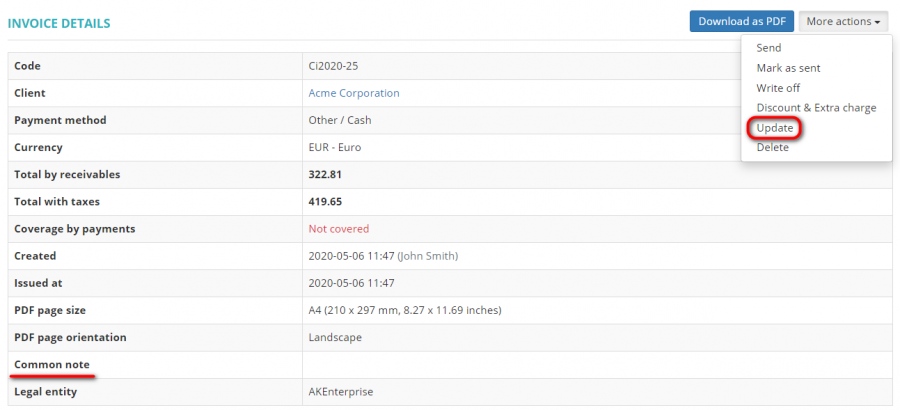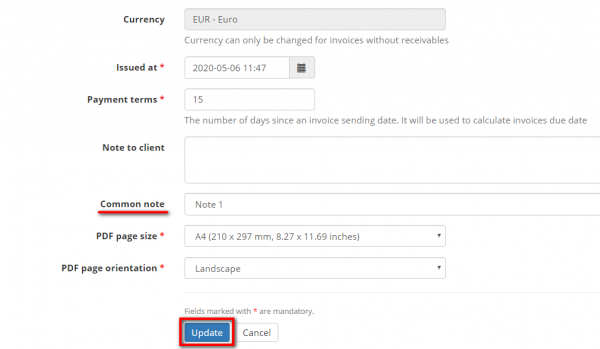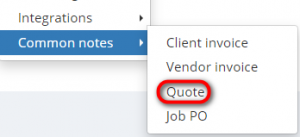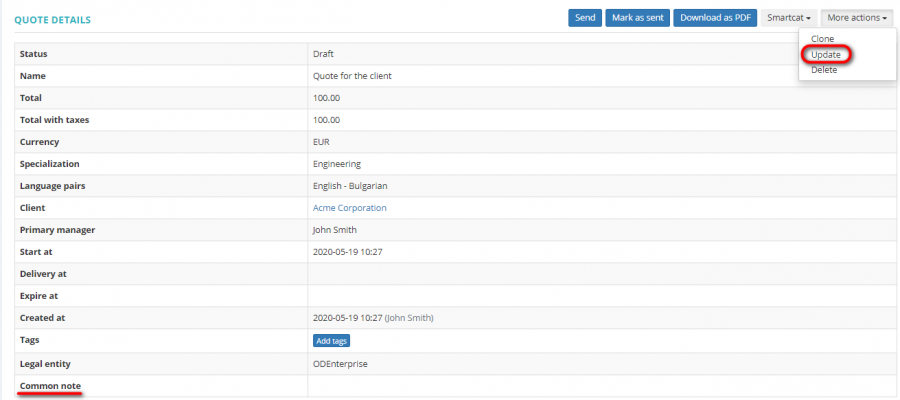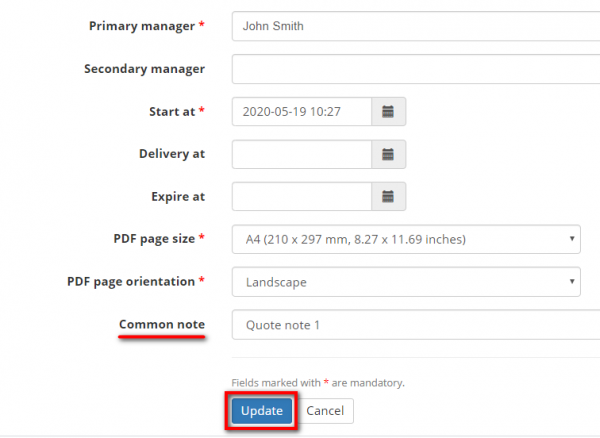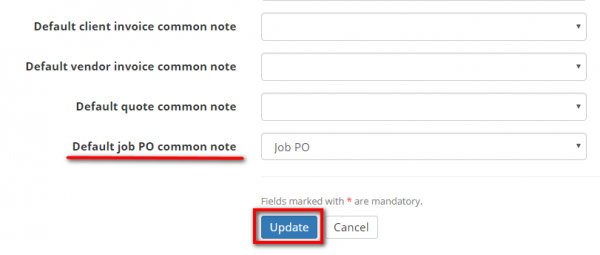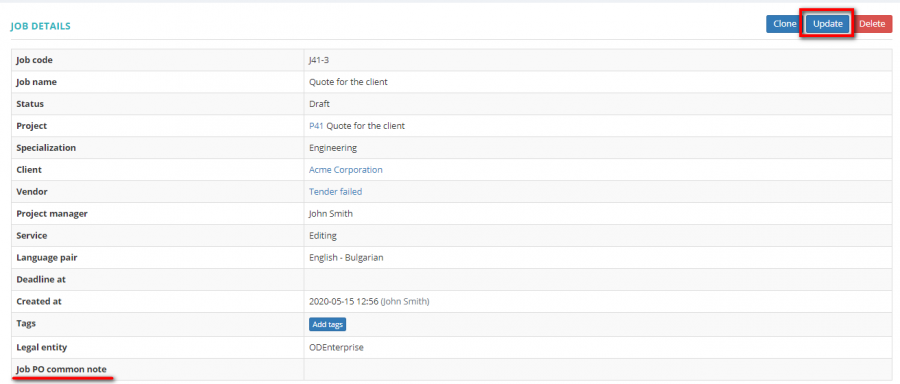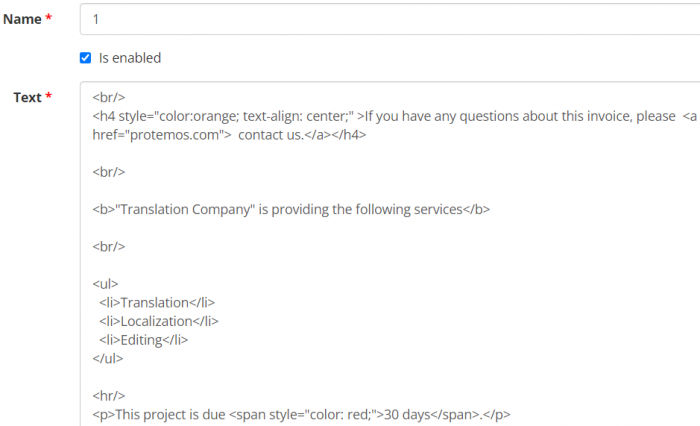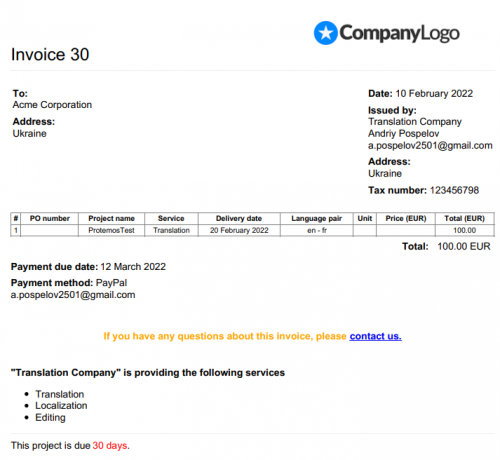PDF templates
Features described in this article will be available with the forthcoming system release.
Watch our video tutorial on Common notes - ![]()
You can create PDF templates for client invoices, vendor invoices, quotes, and job PO.
PDF template text can contain valid XHTML 1.0 markup. Allowed XHTML elements: a, b, br, div, h1, h2, h3, h4, h5, h6, hr, i, li, ol, p, span, ul. Allowed attributes: href, style.
To create a template, go to Settings → PDF Templates:
You always can clone, update or delete the templates:
Contents
Client invoice PDF templates
To create the client invoice PDF template, go to Settings → PDF Templates → Client invoice:
Click "New PDF template":
Fill in the fields and select the needed options:
- Name — a name of the template;
- Page size — select whether the page size is A4 or a letter size;
- Page orientation — select the portrait or landscape page orientation;
- Top margin, mm — select the top margin height in millimeters;
- Bottom margin, mm — select the bottom margin height in millimeters;
- Locale - locale defines the language of the template text;
- Page header — a text that appears at the top of the page;
- Page footer — a text that appears at the bottom of the page;
- Common note — a text that appears after the payment method description;
You can define a default client invoice PDF template and it will be applied to all the newly created clients.
Go to the Account page, scroll down to the Default settings, and click "Update":
Select the needed one from the drop-down list and click "Update":
You can also select the default client invoice PDF template for each client.
Go to the needed client profile, scroll down to the Settings section and click "Update":
Select the template from the drop-down list and click "Update":
If needed, you can select the template for a specific client invoice:
Open the needed invoice and click "Update":
Choose the template from the drop-down list, and click "Update":
![]() Back to the table of contents.
Back to the table of contents.
Vendor invoice common notes
To add the vendor invoice common notes, go to Settings → Common notes → Vendor invoice:
Press "New common note":
Enter the name, the comment, and press "Create":
You can define a default vendor invoice common note that will be displayed in every vendors' invoices you issue.
Go to the Account page, scroll down to the Default settings, and press "Update":
From the drop-won list choose the needed one, and press "Update":
You can update the common vendor invoice note in invoices. Open the needed invoice and press "Update":
Choose the needed invoice common note from the drop-down list, and press "Update":
![]() Back to the table of contents.
Back to the table of contents.
Quote common notes
To add the quote common notes, go to Settings → Common notes → Quote:
Press "New common note":
Enter the name, the comment, and press "Create":
You can define a default quote common note that will be added to every quote you create.
Go to the Account page, scroll down to the Default settings, and press "Update":
From the drop-down list choose the needed one, and press "Update":
Add a quote common note
You can update the common quote note in the needed quote when you create it.
You also can add the common not by pressing the "Update":
Choose the needed quote common note from the drop-down list, and press "Update":
![]() Back to the table of contents.
Back to the table of contents.
Job PO common notes
To add the job PO common notes, go to Settings → Common notes → Job PO:
Press "New common note":
Enter the name, the comment, and press "Create":
You can define a default job PO common note that will be added to every job you create.
Go to the Account page, scroll down to the Default settings, and press "Update":
From the drop-down list choose the needed one, and press "Update":
You can update the common job PO note for the needed job when you create it.
Or open already created job and press "Update":
Choose the needed job PO common note from the drop-down list, and press "Update":
![]() Back to the table of contents.
Back to the table of contents.
XHTML elements and attributes
For text to start from a new page - <p style="clear: both; display: block; page-break-after: always;"></p>
That's the example on how your invoice can look like:
Note: please avoid this sign & because the system doesn't allow to save the common note.
